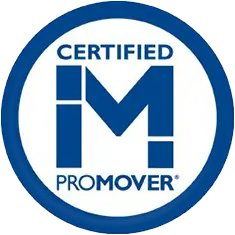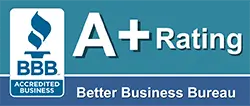Relocating your business can be an overwhelming task, but with careful planning and execution, it can also be a transformative opportunity. The right approach to an office move not only minimizes disruptions but can also enhance productivity and employee morale. This article will provide valuable strategies to ensure your office move is seamless and efficient.
Understanding the Need for Relocation
The decision to relocate a business is often driven by various factors that can significantly affect its future success. Understanding these factors will help in making an informed decision regarding the move.
Evaluating Business Growth and Expansion
If your business is experiencing growth, your current office space may no longer meet your operational needs. A larger space can accommodate new employees, modern technology, and even more efficient workflows. An evaluation of how much space you need now and in the foreseeable future is essential.
Consider forecasting your growth trajectory. An analysis of industry trends and customer demand can provide insights on whether a move is warranted or whether reconfiguring your current space would suffice. Additionally, it’s important to consider the potential for future scalability. Will the new location allow for easy expansion should your business continue to thrive? This foresight can save you from the hassle of relocating again in a few years.
Assessing Current Office Limitations
Beyond sheer size, assessing the limitations of your current office space is crucial. This might include factors such as poor location, outdated facilities, and inadequate parking. A location that is difficult to access may deter employees and clients alike.
Moreover, examine how your current layout affects productivity. Are there collaboration areas for teams or is privacy an issue for your clients? Identifying these limitations will clarify the benefits a new space could offer. Furthermore, consider the amenities available in your current location. Are there nearby restaurants, gyms, or public transport options that enhance employee satisfaction? A relocation could not only address spatial constraints but also improve the overall work-life balance for your team, fostering a more engaged and motivated workforce.
Planning Your Office Move
A well-thought-out plan can make the entire moving process smoother and more manageable. From a realistic timeline to budget considerations, careful planning is the backbone of a successful office relocation.
Setting a Realistic Timeline
Establishing a timeline is essential in coordinating all elements of your move. Ideally, you should build a timeline that includes pre-move preparations, the actual moving day, and settling in at the new location.
Consider creating a checklist that lists all tasks to be accomplished before, during, and after the move. Assigning deadlines can keep everyone accountable and help track progress effectively. Additionally, it can be beneficial to schedule regular check-in meetings with your team to discuss the timeline and address any concerns or adjustments that may arise. This collaborative approach not only fosters communication but also ensures that everyone is on the same page, which is crucial for a seamless transition.
Budgeting for Your Move
Cost is often one of the most significant concerns when planning an office relocation. Budgeting correctly can help maintain financial stability during this transition. Start by listing all potential expenses, including hiring professional movers, purchasing new furniture, and any renovations needed at the new site.
Be sure to include contingency funds in your budget to account for unexpected costs. This foresight can ease financial pressure and keep the move on track. Furthermore, consider exploring various cost-saving strategies, such as negotiating with vendors for better rates or seeking out bulk purchase discounts for office supplies. Engaging with your team to gather insights on potential cost-saving measures can also yield innovative ideas that may not have been previously considered, ultimately leading to a more efficient and economical move.
Choosing the Right New Location
Choosing the right location can impact not only your operations but also your ability to attract and retain talent. Make careful considerations to ensure the new space meets the current and future needs of your business.
Considering Business Needs and Employee Convenience
Your new location should be strategically chosen to align with your business objectives. Consider the type of clients you serve, the industries you interact with, and whether the new location supports those relationships.
In addition, consider the convenience for your employees. Are there public transport options available? Will they have easy access to necessary amenities? Taking employee convenience into account can lead to improved morale and retention. A location that offers nearby dining options, recreational facilities, and childcare services can significantly enhance the work-life balance for your staff, making your company more attractive to potential hires. Furthermore, a well-chosen location can foster collaboration and creativity among employees, as they may be more inclined to engage in after-work activities or networking events in a vibrant area.
Evaluating Local Market Conditions
The local market plays a crucial role in your business’s success. Investigate local competition, client demographics, and potential for growth. Understanding the area’s economic stability, accessibility, and business networking opportunities can inform your decision.
It’s also beneficial to engage with local chambers of commerce or business groups to gain insight into the community. This can help identify any potential challenges or advantages specific to your new location. Additionally, consider the local workforce availability and skill levels, as these factors can greatly influence your hiring capabilities. Engaging with local educational institutions for potential partnerships can also provide a pipeline of skilled graduates ready to enter the workforce. By immersing yourself in the local business culture, you can better position your company to thrive in its new environment, tapping into resources and networks that can facilitate growth and innovation.
Preparing Your Team for the Move
Involving your team in the relocation process can help minimize anxiety and resistance. Effective communication and preparation are key to ensuring a smooth transition.
Communicating the Move to Employees
Openly discussing the reasons for the move can help alleviate fears and build excitement. Ensure that your employees understand the benefits of moving, not just for the business, but for them personally. Transparency about how the move will affect their day-to-day work is vital.
Involve them in the process by asking for their input on factors like office layout or amenities. This inclusivity makes employees feel valued and decreases anxiety surrounding change.
Minimizing Disruption During the Transition
To ensure minimal disruption, create a plan that prioritizes essential functions and projects during the moving stage. Designate specific individuals to oversee different aspects of the move. This gives employees focused responsibilities while keeping lines of communication open.
Provide adequate resources, including time off or flexible work arrangements during the transition phase. This consideration can help alleviate stress, allowing employees to adapt to the new environment smoothly.
Hiring Professional Movers
When your business is preparing for a move, hiring professional movers can be a crucial step in the process. Their expertise can mitigate risks and streamline the transition.
Selecting a Reliable Moving Company
Choosing the right moving company is paramount. Look for companies with a proven track record, strong customer reviews, and comprehensive services that meet your specific needs.
Request quotes from multiple companies, and thoroughly vet their licensing, insurance, and experience with commercial relocations. Also, ensure they have the capacity to manage your specific requirements, including equipment transportation or specialized moving services.
Understanding the Role of Professional Movers
Professional movers offer more than just transportation; they can also assist with the packing, disassembly, and reassembly of office furniture. Their expertise can help ensure that everything is handled safely and efficiently.
In addition, discuss the timeline and any contingencies in place for unforeseen delays or complications. Being clear about these aspects can further alleviate stress and prepare your business for a successful transition.
Relocating your business need not be a daunting task. With thorough planning, the right support, and effective communication, office relocation can lead to new opportunities and enhanced prospects for growth.
















